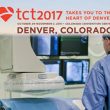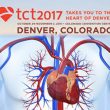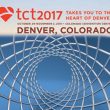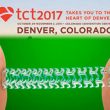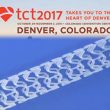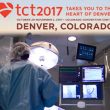1) Balloon Angioplasty: A Reasonable Plan B for Chronic Thromboembolic Hypertension Thromboembolic pulmonary hypertension is caused by pulmonary artery stenosis caused by organized thrombi. The only treatment potentially healing for this disease is surgical thrombectomy. However, patients with lesions in very peripheral branches or high surgical risk patients with comorbidities might benefit from a plan B,...
Angioplasty Complexity May Define the Duration of Dual Antiplatelet Therapy
The DAPT study concluded that continued thienopyridine plus aspirin beyond a year after coronary angioplasty is associated with a decrease in the rate of stent thrombosis and major cardiovascular events. In contrast, there is a significant increase in moderate to severe bleeding when compared with continued aspirin alone. Based on the outcomes of this and...
DACAB: Ticagrelor and Aspirin Improve Vein Graft Patency
According to this Chinese study, dual antiplatelet therapy with ticagrelor and aspirin improves vein graft patency a year after surgery without increasing the risk for major bleeding. Treatment with the P2Y12 inhibitor ticagrelor in combination with aspirin has been widely accepted for patients with acute coronary syndrome undergoing angioplasty. However, there were no related data regarding surgical revascularization. Read also: “Ticagrelor...
TCT 2017 | FAME 2 at 3 Years: Better Results with Angioplasty and at a Cost Similar to Medical Treatment
Courtesy of SBHCI. Angioplasty in patients with chronic stable angina and functionally significant lesions improves clinical outcomes and quality of life over the long term, as compared with optimal medical therapy alone. Furthermore, the invasive approach becomes more cost-effective as the years go by. Previously, FAME 2 had shown that angioplasty was initially more expensive, but...
TCT 2017 | ORBITA: The Placebo Effect of Angioplasty
Courtesy of the SBHCI. Chronic stable angina and severe coronary lesion patients who undergo angioplasty in a single vessel show no better outcomes than individuals who undergo a placebo sham procedure when it comes to exercise capacity and symptoms, according to this study presented at TCT and published simultaneously in the Lancet. The curious results...
TCT 2017 | SENIOR: DES with a Bioresorbable Polymer and Short Dual Antiplatelet Therapy in Elderly Patients
Courtesy of the SBHCI. This study sought to assess the safety and efficacy of an everolimus-eluting stent with a biodegradable polymer (SYNERGY II) vs. a conventional stent (REBEL) in patients >75 years old with short duration of dual antiplatelet therapy. Before randomization, investigators recorded the planned duration of dual antiplatelet therapy (1 month for stable patients and 6 months...
ABSORB III: after 3 Years, the Bioresorbable Scaffold is Still a Disappointment
Courtesy of the SBHCI. The 3-year outcomes of the ABSORB III trial, which randomized 2008 patients 2:1 to an everolimus eluting bioresorbable scaffold (1322 patients) vs. a metallic stent with permanent everolimus eluting polymer (686 patients), was published with low profile and great disappointment. Primary end-point, a composite of target vessel failure, occurred in 13.4% of patients receiving...
Absorb IV: Bioresorbable Scaffolds with an Optimized Implantation Technique
Courtesy of the SBHCI. The Absorb IV trial randomized 2604 patients in a 1:1 ratio to receive an Absorb everolimus-eluting bioresorbable scaffold or a Xience stent. With the aim of minimizing the problems observed in previous studies, the Absorb IV protocol excluded small caliber (<2.5 mm) vessels and included mandatory aggressive pre-dilation followed by non-complacent balloon post-dilation. Patients could...
ABSORB II: No Benefits from Scaffolds After Complete Bioresorption
Courtesy of the SBHCI. The ABSORB II study sought to assess the mechanical properties of everolimus-eluting bioresorbable scaffolds, such as the increase in minimal lumen area and the recovery of the vasomotor properties of the treated artery. Last year saw the publishing of negative results for the primary endpoints, registering a higher rate of complications at...
EXCEL-QOL Substudy: Similar Quality of Life both with CABG and Left Main PCI
Courtesy of SBHCI. According to a new quality of life sub-study, the “EXCEL”, both coronary artery bypass graft and left main PCI are associated with significant clinical improvement in terms of angina frequency, tolerance to exertion and treatment satisfaction. At 12 and 36 months, there were no significant differences between PCI and surgery after several quality of...



